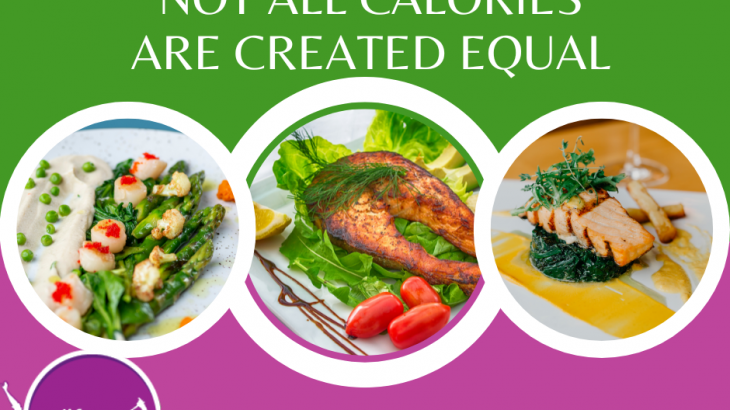A cautionary note on calorie counting; Not all calories are created equal. Well, all calories are equal when they are in us, as little explosions of energy. However, remember that we eat food, not calories. And some food takes more energy to extract the calories from. This is why the source of the calories is important. Whether from a steak, a carrot or a doughnut it makes an enormous difference. While calories are a useful reflection of portion size, they are not a marker for the nutritional content of the food. Instead, we have to take into account the ‘calorific availability’, which is the amount of energy we can extract from the food, as opposed to the number of calories in it. Digestion breaks food down into its nutritional building blocks, all of which get moved across the gut wall into our blood. These building blocks are, however, just easily transportable intermediates that need to be metabolised to be converted into usable energy. This process of producing energy also costs energy. Calories from our food is either used as energy or converted to fat.
The two elements of food that have the biggest influence on calorie availability are protein and fibre.
Protein takes longer to digest and more energy to metabolise, so it is more satiating than fat or carbs (calorie for calorie). So, it keeps you fuller for longer. You feel fuller, you eat less, you lose weight.
Also, protein promotes firm muscle tissue. The more muscle you have, the faster your metabolism is. This means you burn more calories overall, keeping your body fat and weight lower
For every 100 calories of protein we consume, we are only ever able to use 70 calories, with the other 30 calories needed to handle the protein. Thus, protein has a calorific availability of 70 percent. All the protein calorie counts the we see today are 30 percent out!
(Fat has a calorific availability of 98 percent, carbs 90 to 95 percent)
So no, not all calories are the same
If we zoom out and take a broader view, it becomes clear that this concept goes far beyond an esoteric piece of nutritional trivia; rather, it explains how many popular diets work.
See our online shop for a range of delicious protein powders





